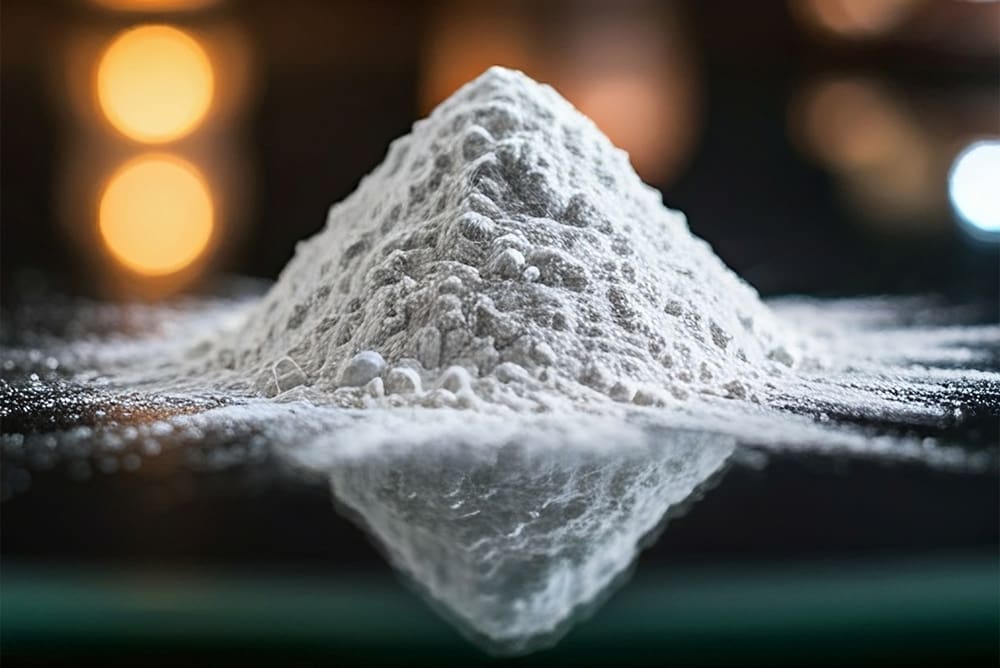Key Takeaways
- Talcum powder is linked to ovarian cancer, mesothelioma, and respiratory issues, with manufacturers like Johnson & Johnson failing to warn consumers about these risks.
- Consumers have the right to safe products, transparent information, and protection from misleading advertising under product liability and consumer protection laws.
- Companies, despite knowing about the risks for decades, prioritized profit over consumer safety.
- To protect yourself, avoid talc-based products, read labels carefully, and stay informed about product recalls and safety updates.
Talcum powder has long been a household staple, trusted for its ability to keep skin dry and reduce friction. For decades, it was marketed as safe—especially for babies and personal care. But what happens when a product once associated with comfort and cleanliness is linked to life-altering diseases like ovarian cancer and mesothelioma? The harsh reality is that many of us weren’t warned. Companies knew the risks and chose to stay silent.
If you or someone you love has been affected by talcum powder-related health issues, understanding your rights is critical. You deserve to know the truth about the dangers hidden in plain sight and how companies put profits over people.
The Hidden Risks of Talcum Powder
The reality of talcum powder’s risks is staggering, especially considering its widespread use. For years, women have used it in the genital area to reduce moisture, but this may come at a high price.
“Beyond cancer, talcum powder has also been linked to respiratory problems, especially in infants. Inhalation of fine talcum powder particles can lead to talcosis.”
Research shows that talcum powder particles can reach the ovaries, possibly leading to inflammation and increasing the risk of ovarian cancer. Meanwhile, talc mined near asbestos deposits—known for causing mesothelioma—has also made its way into some products, posing another deadly threat. Even inhaling talc can lead to serious respiratory issues, particularly in babies.
Here’s a closer look at how talc powder exposure increases the risk of these conditions:
Ovarian cancer: Several studies have shown a possible link between the use of talcum powder in the genital area and ovarian cancer. When women use talc in this manner, the fine powder particles may travel through the vagina, into the uterus and fallopian tubes, and reach the ovaries. Over time, this may lead to inflammation, a factor that can increase cancer risk. The International Agency for Research on Cancer (IARC), a part of the World Health Organization, has classified the use of talcum powder on the genital area as “possibly carcinogenic to humans.”
Mesothelioma: Talc in its natural form is often found in proximity to asbestos, a known carcinogen. Despite efforts to purify talc, traces of asbestos have been found in talcum powder products. Inhaling talc contaminated with asbestos can lead to mesothelioma, a rare but aggressive form of cancer that affects the lining of the lungs, abdomen, or heart. Unlike ovarian cancer, mesothelioma is solely caused by asbestos exposure, and even small amounts can result in this deadly disease. For consumers, this risk arises from inhaling talcum powder dust, particularly when using it for cosmetic or hygiene purposes.
“Manufacturers have a legal obligation to warn consumers about potential risks. In the case of talcum powder, this responsibility was shockingly ignored for decades.”
Respiratory issues: Beyond cancer, talcum powder has also been linked to respiratory problems, especially in infants. Inhalation of fine talcum powder particles can lead to talcosis, a condition that causes inflammation of the airways, chronic cough, and even lung damage. This has raised concerns about the safety of talcum powder in baby care products.
Despite these known risks, talcum powder products remained on shelves, marketed as safe and gentle. Consumers unknowingly used a product that could harm them, unaware of the potential consequences.
Your Rights As a Consumer
As a consumer, you deserve to know the risks of the products you trust. When companies fail to provide clear warnings, they violate your right to make informed choices. Johnson & Johnson, for example, knew about the potential dangers of talcum powder as early as the 1970s but continued to sell it without proper warnings. Their negligence, uncovered through lawsuits, is a clear example of how manufacturers prioritized profit over people.
You have the right to:
- Be informed: You deserve to know the risks of the products you use. When companies fail to provide honest, comprehensive warnings, they violate your right to make informed choices. Manufacturers like Johnson & Johnson had access to research linking talc to cancer, yet for years, they chose to withhold that information.
- Safe products: You have the right to expect that products are safe when used as intended. When they’re not, companies can be held accountable. Thousands of consumers have already filed lawsuits, claiming they were put at risk by talcum powder that was marketed as harmless.
- Protection from misleading ads: Companies that hide the dangers of their products behind misleading advertising can face serious consequences. Talcum powder was advertised as safe for daily use, despite decades of mounting evidence to the contrary.
The Manufacturers’ Duty to Warn—And Where They Failed
Manufacturers have a legal obligation to warn consumers about potential risks. In the case of talcum powder, this responsibility was shockingly ignored for decades.
- Failure to warn: Documents from inside major companies like Johnson & Johnson show that they were aware of the potential cancer risks as far back as the 1970s. Instead of adding warning labels or pulling products from the market, they continued selling talc-based products, placing millions of people in harm’s way.
- Negligence: This failure to warn consumers wasn’t just an oversight—it was a betrayal of trust. In court, manufacturers have been found negligent because they knowingly endangered public health by withholding crucial information.
How to Protect Yourself
If you’ve used talcum powder and are concerned about the risks, there are steps you can take to protect yourself and your loved ones:
- Avoid talc-based products: The simplest way to reduce your risk is by avoiding talc altogether. Many brands now offer talc-free alternatives, such as cornstarch-based powders, that provide the same benefits without the associated health risks.
- Read labels carefully: Look for products that are clearly labeled “talc-free.” Be cautious of vague labels and always check the ingredients list to avoid hidden dangers.
- Stay informed about recalls: Regularly check for product recalls related to talcum powder. The FDA’s database of recalls is a good place to start, as it’s updated frequently.
- Do your research: Look into the companies behind the products you use. Brands that are transparent about their ingredients and safety protocols are more likely to prioritize consumer well-being.
Regulatory and Legal Battles
While consumer rights laws offer protection, the regulatory landscape around talcum powder has been slow to catch up. The U.S. Food and Drug Administration (FDA) doesn’t require cosmetic products like talcum powder to undergo rigorous testing, leaving consumers vulnerable. Though there has been progress—such as recalls after asbestos was found in certain products—there is still no federal ban on talc in personal care products.
Around the world, other countries have taken a stricter approach. Courts in places like the U.K. have already held companies accountable for selling dangerous talcum powder products. But in the U.S., many of these products remain on store shelves.
The health risks tied to talcum powder are deeply troubling. Ovarian cancer, mesothelioma, and respiratory issues are real threats, and we have the right to hold companies accountable for their failure to warn us. The fight for safer products and transparency continues, but by staying informed and making conscious choices, you can protect yourself and your loved ones from unnecessary harm.
As legal battles continue, we all must remain vigilant, fighting for their right to safe, transparent products and justice for those harmed by talc. Join the Many who are demanding accountability from these companies and help us protect future generations from this negligence.
Frequently Asked Questions
Studies link talcum powder to ovarian cancer and respiratory issues, especially when used in the genital area or inhaled. The primary concern is contamination with asbestos, a known carcinogen.
Many companies downplayed or ignored scientific evidence of risks, failing to label products appropriately. Internal documents often showed they were aware of possible contamination but chose not to disclose it.
Asbestos and talc naturally occur together, so contamination can happen. However, some companies allegedly overlooked rigorous testing and, in some cases, resisted regulatory oversight.
Yes, cornstarch-based powders or talc-free formulas offer similar effects without the asbestos risk. These options are recommended for those seeking safer alternatives.
Many people have successfully filed lawsuits, especially if they developed cancer after prolonged talcum powder use. Consult an attorney to explore eligibility, as each case varies.




